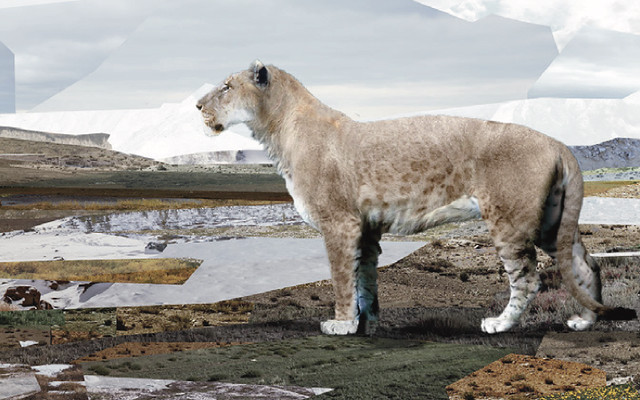The American lion (Panthera leo atrox)[2][3][4][note 1] – also known as the North American cave lion[3] – is an extinct subspecies of lion that lived in North America during the Pleistocene epoch (340,000 to 11,000 years ago).[5]Genetic analysis has revealed that it was the sister lineage to the Eurasian cave lion.[3] It was part of the Pleistocene megafauna, a wide variety of large mammals that lived at the time. The majority of American lion fossils have come from the La Brea Tar Pits.[6]
The American lion was about 25% larger than the modern African lion, making it one of the largest known felids.[7]
The earliest lions known in the Americas south of Alaska are from the Sangamonian Stage – the last interglacial period – following which, the American lion spread from Alberta to Maryland, reaching as far south as Chiapas, Mexico.[19] It was generally not found in the same areas as the jaguar, which favored forests over open habitats.[12] It was absent from eastern Canada and the northeastern United States, perhaps due to the presence of dense boreal forests in the region.[20][21] The American lion was formerly believed to have colonized northwestern South America as part of the Great American Interchange.[22] However, the fossil remains found in the tar pits of Talara, Peru actually belong to an unusually large jaguar.[23][24][25] On the other hand, fossils of a large felid from late Pleistocene localities in southern Chile and Argentina traditionally identified as an extinct subspecies of jaguar, Panthera onca mesembrina, have been reported to be remains of the American lion.[18]
(From Wikipedia, June 2018)




